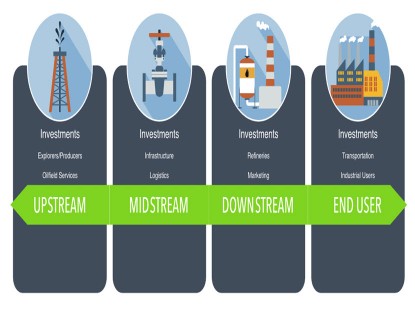The Three Factors that Continue to Drive the Energy Sector
Portfolio Managers Ben Cook and Josh Wein discuss Energy sector performance in the first half of 2024, how rate cuts could affect Energy companies, mergers and acquisition activity, the adoption of renewable energy, copper producer Freeport-McMoRan, and an Energy outlook.
-
 Ben Cook, CFAPortfolio Manager
Ben Cook, CFAPortfolio Manager -
 L. Joshua Wein, CAIAPortfolio Manager
L. Joshua Wein, CAIAPortfolio Manager
The S&P 500® Energy Index rose nearly 11% year-to-date through June 30, 2024. What is driving performance?
We believe three factors have been driving the Energy sector’s favorable performance in the first six months.
1. Demand trends for crude oil and natural gas remain firm while supplies are only modestly growing, resulting in tightening markets and supportive commodity prices.
2. Capital discipline continues as management teams align with equity holders’ interests. We continue to see the return of capital to the benefit of the equity holders via debt reduction, dividend hikes, and share repurchases.
3. Energy companies across the traditional hydrocarbon energy sector are trading at an attractive valuation relative to historic averages, presenting value investors with an alternative to more richly valued sectors such as Technology.
How could the interest rate cuts affect Energy companies?
The Federal Reserve will likely react with an accommodative stance should the economy start to weaken. The consensus view by Wall Street economists suggests we could see two cuts in late 2024. We believe these rate cuts would be favorable for overall economic conditions, and should translate to a supportive equity market environment. Rate cuts are generally viewed as accommodative, and loose monetary conditions allow for reduced borrowing rates, acting as a catalyst to improve or increase economic activity.
Importantly, a growing economy should propel energy demand which in turn should support commodity prices ultimately providing a tailwind to energy sector operating and financial results.
Would you please discuss the level of mergers and acquisitions (M&A) transactions in the Energy industry?
According to S&P Global Market Intelligence, oil and gas deals reached nearly $150 billion in value on a year-to-date basis through July 17, 2024. This total is double the level of M&A activity over the same period in 2023 when transactions totaled about $75 billion.
We believe companies are looking to strengthen their inventory, balance and diversify portfolios, and capture synergies. As companies strengthen their strategic positioning in various shale basins, we often see both productivity enhancements as well as cost efficiencies gains, with the net effect being improved cash generation, which is clearly favorable for investors.
We should continue to see more transactions as there are a significant number of private companies and a shrinking number of public companies in several key shale basins that could be targets, offering would-be acquirers the opportunity to scale up.
How are Energy companies pursuing the energy transition?
Across the traditional hydrocarbon energy sector we see a variety of ways in which companies are attempting to reduce the carbon intensity of their overall business.
For integrated companies, refining operations generally include hydrogen production and use. Given their preexisting expertise in handling hydrogen, companies such as Exxon and Chevron are expanding production to meet growing market demand for hydrogen as a zero-carbon emission power.
Exxon is also pursuing the development of lithium extraction activities in southern Arkansas and could become a significant supplier to the battery industry.
Upstream sector companies engaged in drilling and development activities are working to reduce methane emissions by containing gases that escape or otherwise flared during the production process. Similarly, midstream companies are increasingly scrutinizing infrastructure integrity to ensure the minimization of ‘fugitive’ greenhouse gas emissions.
Generally speaking, the approaches we are seeing to minimize emission and reduce carbon intensity are as varied as the asset bases operated across the sector, and we see this trend continuing.
Would you please discuss the Energy sector’s current valuations?
We believe Energy companies look particularly attractive relative to their long-term valuations as well as those of the overall market. As of June 30, 2024, the 2024 Enterprise Value (EV) to EBITDA for the S&P 500® Energy Index was 6.7x, while the 10-year average multiple was 7.8x.
Energy companies also look attractively valued compared to the overall S&P 500® Index, which was 15.1x EV/EBITDA as of the same period.
Would you please provide an update on copper prices and portfolio holding Freeport-McMoRan?
Freeport-McMoRan is a leading international mining company which has been held in the Hennessy Energy Transition Fund for four years. We believe the supply and demand balance for copper will continue to be tight over the medium and longer term. The industry is requiring roughly $5.50 per pound to incentivize new mining supply but copper is trading around $4, suggesting that there may not be any meaningful capacity until prices increase.
In the meantime, we are seeing a rising demand for copper due to its qualities as a conductive metal that play a part in the electrification of a variety of industries. We believe this driver will provide a significant tailwind to demand for copper miners such as Freeport-McMoRan.
What is your outlook for the Energy sector?
We have a favorable view on the sector. The most important theme for investors continues to be company management alignment with shareholders. Corporate managers now recognize that prioritizing cash returns to investors is a value driver for investors who in turn are willing to support equity valuation. While price performance across the sector has been relatively good since 2020, valuations still remain below historic norms. In our view, consistent operating and financial results combined with current discount valuation underscores the attractive investment opportunity today.
- In this article:
- Energy
- Energy Transition Fund
You might also like
-
 Sector Highlight
Sector HighlightNatural Gas in 2025: Powering Growth and Innovation
 Ryan C. Kelley, CFAChief Investment Officer and Portfolio Manager
Ryan C. Kelley, CFAChief Investment Officer and Portfolio Manager L. Joshua Wein, CAIAPortfolio ManagerRead the Sector Highlight
L. Joshua Wein, CAIAPortfolio ManagerRead the Sector HighlightThe Hennessy Gas Utility Fund is a convenient and simple way for investors to invest in the group of publicly traded members of the American Gas Association (AGA). The Fund’s Portfolio Managers attended the AGA Financial Forum recently to gain insight into trends affecting natural gas companies. The following highlights their takeaways from the Financial Forum.
-
 Investment Idea
Investment IdeaDefining the Energy "Value Chain"
 Ben Cook, CFAPortfolio ManagerRead the Investment Idea
Ben Cook, CFAPortfolio ManagerRead the Investment IdeaEnergy is a large and complex sector. The sector’s broad sub-industries can be divided into a “value chain,” each segment of which has different characteristics and offers different investment opportunities.
-
 Portfolio Perspective
Portfolio Perspective
Midstream FundWhat’s Driving Midstream Company Performance?
 Ben Cook, CFAPortfolio Manager
Ben Cook, CFAPortfolio Manager L. Joshua Wein, CAIAPortfolio ManagerRead the Commentary
L. Joshua Wein, CAIAPortfolio ManagerRead the CommentaryThe Portfolio Managers Ben Cook, CFA and Josh Wein share their insights on midstream companies’ strong performance over the past year, their shareholder-friendly capital allocation approach and current valuations.
